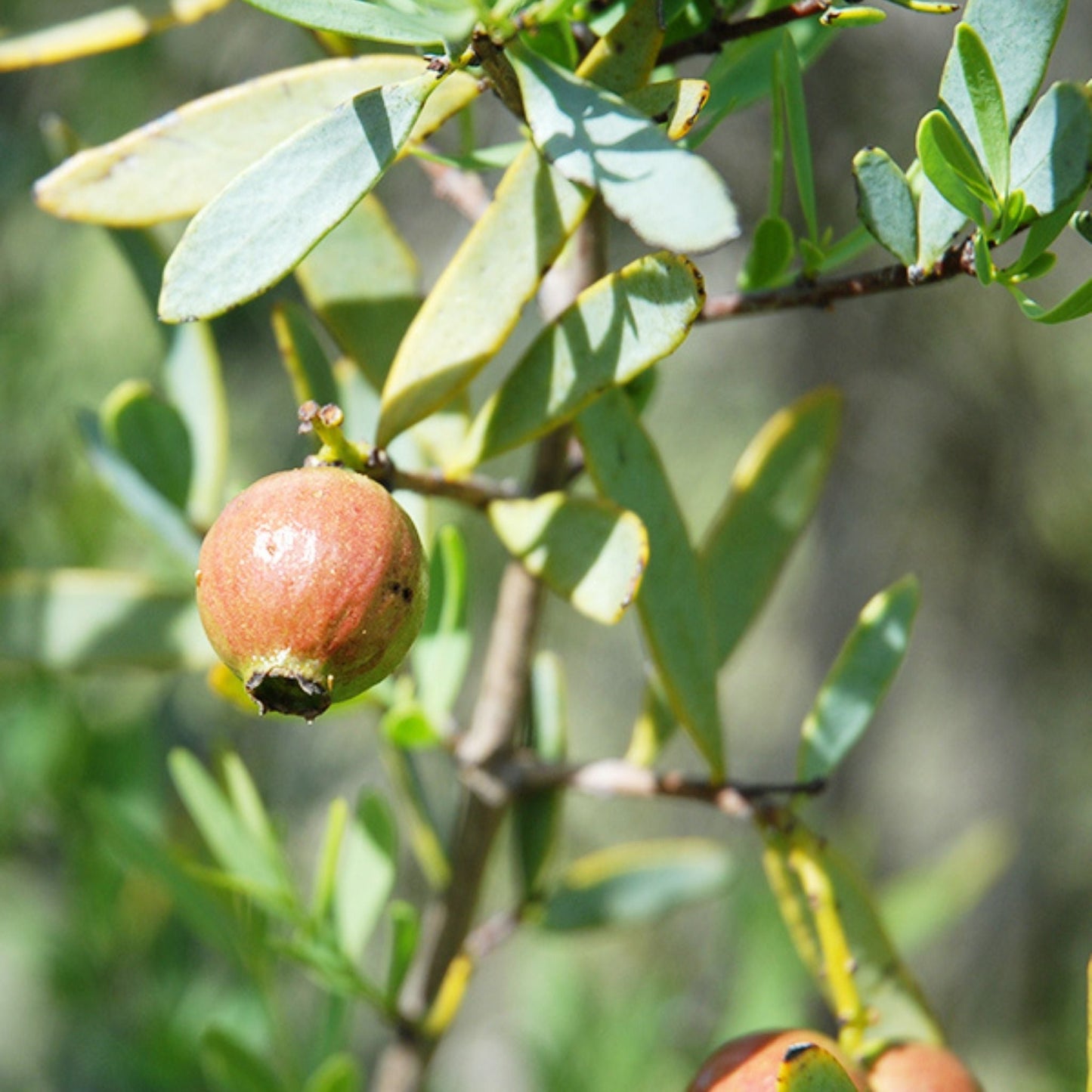Sandalwood (spicatum) Essential Oil
Sandalwood (spicatum) Essential Oil
Santalum spictatum
Common Uses
Common Uses
The relaxing, grounding, calming properties of Sandalwood helps stills the mind making it a favourite in Aromatherapy. With its wonderful, earthy fragrance it is popular in men’s products. Its rich fragrance is not overwhelming and it is well regarded as a perfume fixative. A versatile oil, it is used in many perfumes, deodorants, cosmetics, soaps, incense, massage oils, bath products and skin products. With its earthy fragrance and calming qualities it is great used in vaporizers and diffusers as it is also a sleeping and meditation aid.
Studied Properties
Studied Properties
The oil has a smooth, fragrant, sweet earthy and of a woody aroma. It is antiseptic, anti-bacterial, anti-inflammatory, an expectorant and is a sedative. Sandalwood is well-regarded in skincare, as it tones and relieves itching, inflammation and dehydrated skin. Rashes, scar tissue, eczema, psoriasis, acne and dandruff a few issues it can assist with. Its main constituents are santalols, nuciferol and farnesol.
Typical Chemical Profile
alpha-santalol 15 -25%
epi-alpha-bisalobol 2-12%
trans-alpha-bergamotol 2-10%
epi-beta-santalol 0.5-3.5%
trans farnesol 2-15%
cis-beta-santalol 5-20%
cis-nuciferol, cis gamma-curcumen-12-ol 2-15%
cis-lanceol 2-10%
Optical Rotation@ 20°C: -16 to +4
Relative Density@ 20°C: 0.945-0.980
Refractive Index @ 20°C: 1.500 to 1.517
The santalum spictatum is a tree native to semi-arid areas at the edge of Southwest Australia and it is one of four species of the family Santalaceae to occur in Western Australia. The oil from this amazing tree is proving very popular and more commercially viable than the Indian Sandalwood. To ensure sustainable existence for the natural sandalwood resources, timber harvesting has been regulated since 1920 by the Western Australian Sandalwood Control Act (1929). Plantations were established to renew the tree populations and essential oil production comes only from these managed sources.
The trunk and roots of Australian sandalwood are stripped of bark and distilled for their essential oil. Its sweet, woody character with spicy accents is similar to the fragrance of Indian sandalwood (Santalum album), but the rawer, earthy dimension makes it an original and distinct material. The oils produced by the tree contain a greater complexity of chemicals, many of which have antimicrobial qualities. Sandalwood oil is widely known for being a spiritual, sacred oil, used around the world during practices of prayer and meditation. It is well known in Australian Indigenous circles, and traditional Aboriginal uses include making of implements/artefacts and for medicinal purposes and the seeds/fruits were eaten.
Learn more about Sandalwood on our blog!

More about Sandalwood (spicatum) Essential Oil
-
Studied Properties
- Anti-inflammatory
- Antimicrobial
- Antiseptic
- Astringent
- Balancing
- Exepectorant
- Relaxing
- Soothing
- Warming
-
Common Uses
- Aromatherapy
- Skin Care
- Fragrance
- Bath
- Hair & Scalp Care
- Massage
-
Featured Constituents
- nuciferol
- santalols
- farnesol
While care is taken in good faith to ensure the information offered here is reliable and correct, Naturally Australian Products Inc cannot guarantee the accuracy of information and recommends that each ingredient be further researched with respect to its use.

